Why are all the comets today not like those in the good old days? Comets of the past were bright enough to be seen with the naked eye or binoculars, maybe even in daylight.
You could be forgiven for believing statements like this because countless books and articles paired with images and illustrations show great comets from the past that blazed across the skies, huge tails stretching from horizon to horizon, or comets that were visible in broad daylight.
Take a closer look at the history books and you'll see there have been 32 comets that were exceptionally bright – and 4 of these have been apparitions of Comet Halley.
Since 1800, no fewer than 20 comets have achieved ‘greatness’. This is a very respectable number, but it goes to show that we are in fact no worse off today than amateur astronomers of the past.
Our perception of time has compressed the apparitions of the distant past together and stretched those of the recent past further apart.
At any given time there are dozens of comets in the sky of varying brightness, most of which require large telescopes to be seen. So what is it that makes one of these great?

First in the set of criteria needed for a historical apparition is the comet’s orbit.A great comet’s passage round our local star must either bring it close to Earth or the Sun respectively.
Second, a great comet must have a large nucleus; the larger the nucleus the better, as this will give the potential for a large fraction of the surface to become active.
Third is visibility: comets that make close passes to Earth have the potential to be bright, but these will also be fleeting and last just a few days at best. A comet at a greater distance from Earth will linger in the sky for longer and allow ample time for sustained observation.
Fourth and finally, to be great a comet should have a dusty composition. Dust in abundance is a requirement for a large, visible tail: an essential trait of great comets.
The table above lists the 10 brightest comets of the last 162 years, together with their distance from Earth when at their brightest, perihelion distance, absolute magnitude (the visual magnitude they would appear if placed at a distance both 1 AU from Earth and the Sun), brightest observed magnitude and finally, maximum tail length.
Now that we have our list of the brightest comets, we can explore the reasons why each one became great, compared to the thousands of other comets that have ventured into the inner Solar System.
Here, in chronological order, are our top 10 recent comets. Scroll to the bottom to find out which comet takes the top title!
Read our guide to periodic comets to find out more about these returning celestial visitors.
1
C/1858 L1 Donati
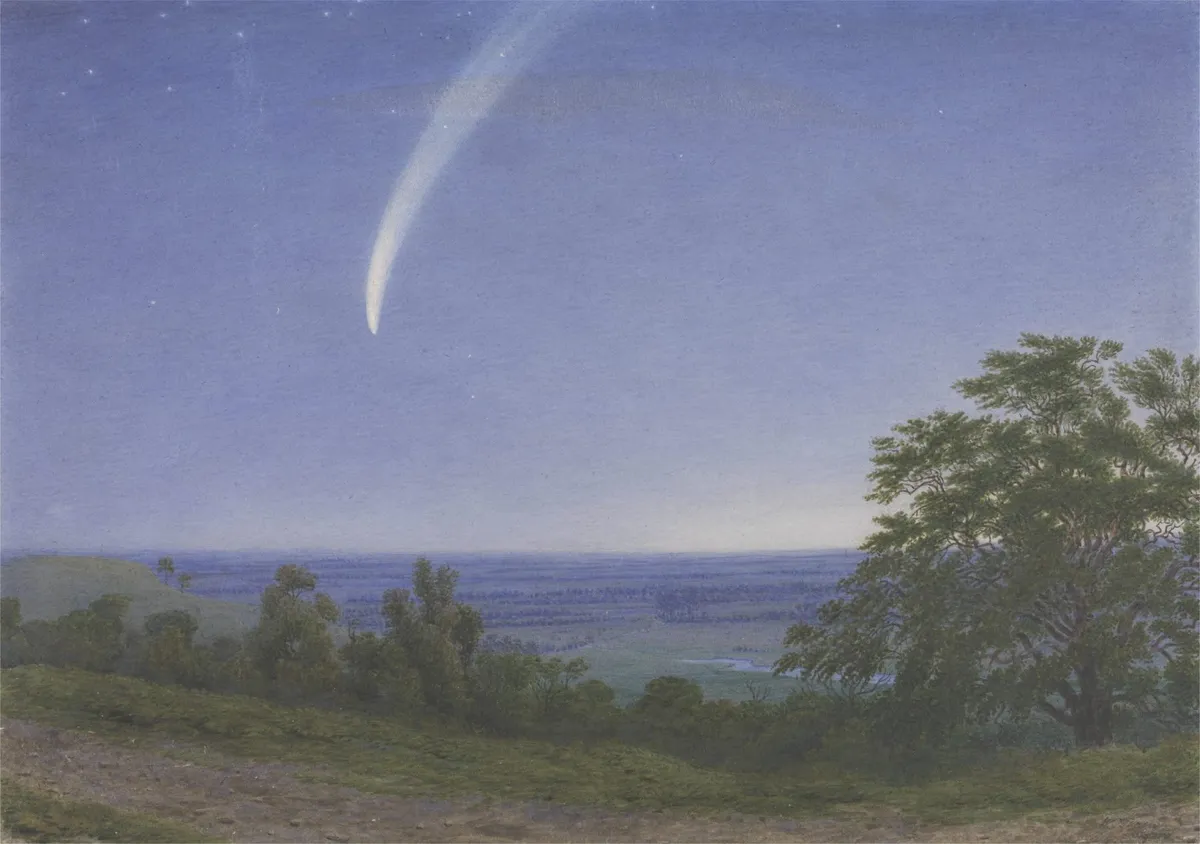
Comet Donati was described by many as the most beautiful comet ever seen. It certainly made an impression upon the art world, with numerous paintings showing it in all its glory.
Even Abraham Lincoln is said to have sat at his window gazing upon it. Donati meets our criteria easily: a quick glance tells us that the comet was close to Earth at perihelion and due to that, we had the full benefit of the encounter.
It was also a very dusty comet that produced an arcing tail of some 50° in length.
2
C/1882 R1 Great September Comet

The Great September Comet was one of the most prominent members of the Kreutz family of comets (see the bottom of this article for more info on them).
At perihelion on 17 September, the comet reached a magnitude of –17.0 as it passed just 480,000km from the surface of the Sun, and was visible in broad daylight.
The coma area appeared elongated on 30 September and two fragments were seen. By 17 October, five fragments had been observed.
Even with its nucleus undergoing so much disintegration at perihelion, the comet remained visible until 1 June 1883.
Subsequent disruption to the nucleus post-perihelion also provided a large quantity of dust to boost the tail.
The size of the nucleus must have been fairly large – perhaps a few kilometres – and this, coupled with the extremely close perihelion encounter, ensured this comet’s place in the annals of greatness.
3
C/1910 A1 Daylight Comet
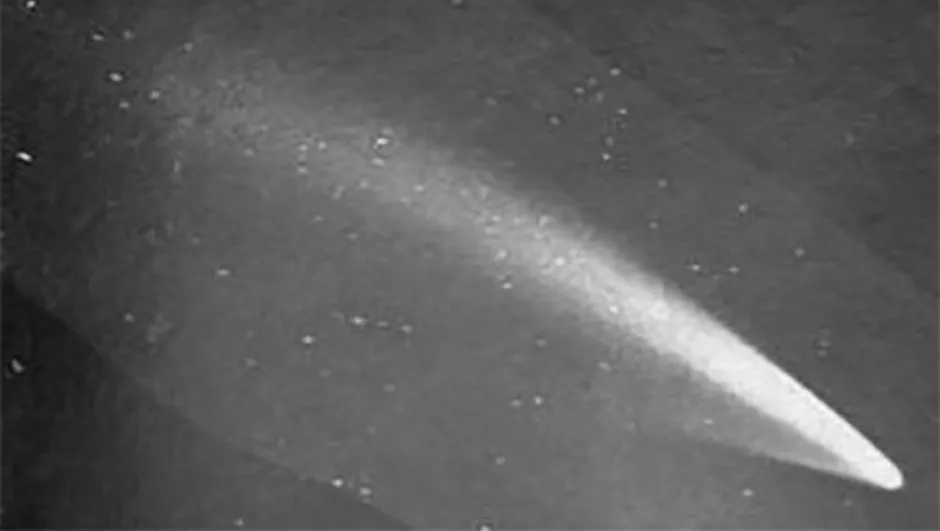
The Daylight Comet of 1910 brightened very quickly as it approached the Sun. It was discovered by several astronomers from the Southern Hemisphere on 12 January when it was already magnitude –1.0.
The comet reached perihelion on 17 January and was visible in broad daylight with a magnitude of –5.0.
Post-perihelion, it saw a rapid decline in magnitude as it moved into Northern Hemisphere skies. But a magnificent dust tail made up for the dimming and it had stretched to 50° by the beginning of February.
Under normal circumstances this object would not have been a great comet: its absolute magnitude was insufficient and its distance from Earth was none too close.
However, its close perihelion pass and dust-rich composition tipped the balance in its favour. This comet's long orbital period means it won’t be back for around 57,000 years.
4
C/1956 R1 Arend-Roland
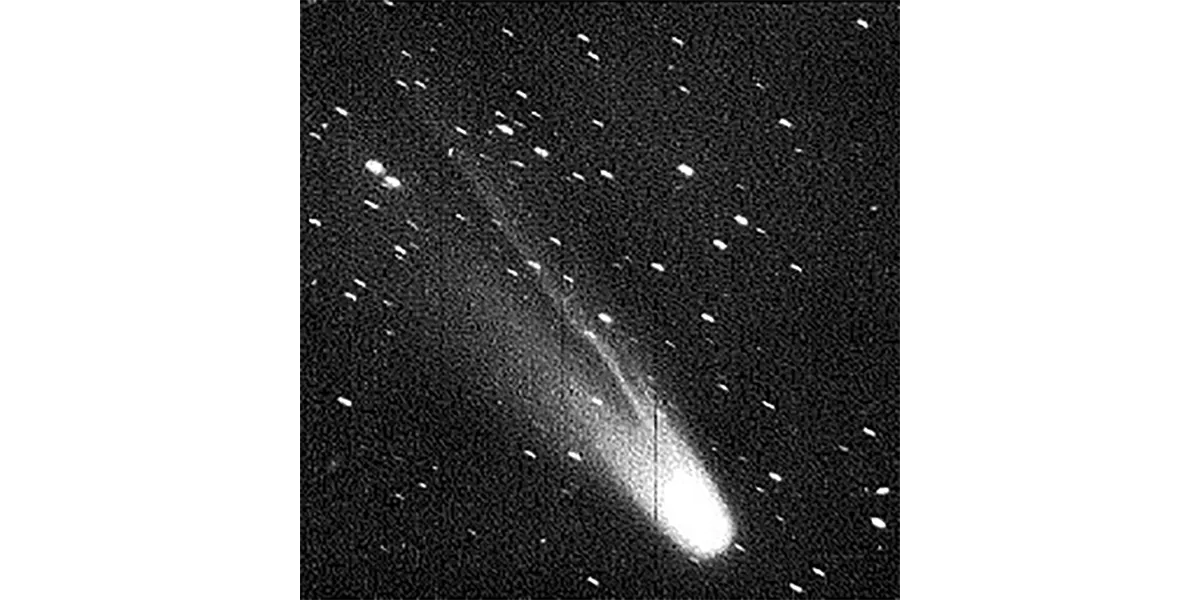
On 8 November 1956 Comet Arend-Roland was discovered on photographic plates at a magnitude of +10.0.Orbital calculations indicated a perihelion pass on 8 April 1957.
As the fourth month of 1957 began, the comet’s tail dynamics had already started to come to life. A 15° length, streamers and even three beams were reported on 29 April.
C/1956 R1 is best known for its dart-like appearance due to an anomalous tail, or anti-tail, first reported on 22 April, measuring 5° in length.
By 25 April it was 12° in length, but by the 29th it had disappeared completely. It should also be noted that Arend-Roland became the subject of the very first Sky At Night TV programme on 24 April.
Compared to the rest of the list, this comet achieved only an average pass of Earth, its saving grace being a close perihelion and a dusty composition.
Due to its hyperbolic orbit Arend-Roland will eventually be cast out of the Solar System.
5
C/1965 S1 Ikeya-Seki

Comet Ikeya-Seki was almost a month from perihelion when it was discovered on 18 September 1965.
It became clear that it would approach the Sun very closely at perihelion on 21 October and that it was, in fact, a member of the Kreutz family of comets.
On the day of perihelion the comet passed just 450,000km from the Sun and was widely observed in broad daylight across the world at a magnitude of –10.0.
Interestingly, just before perihelion, the comet was seen to fragment into at least three pieces – just as its sister comet had done in 1882.Its nucleus must have been a couple of kilometres in size at best, as its absolute magnitude would suggest.
Being a Kreutz family member, it was very dusty in composition and its close pass to the Sun meant it was assured of brightness.The periods of the fragments now range between 876 and 1,060 years .
6
C/1969 Y1 Bennett
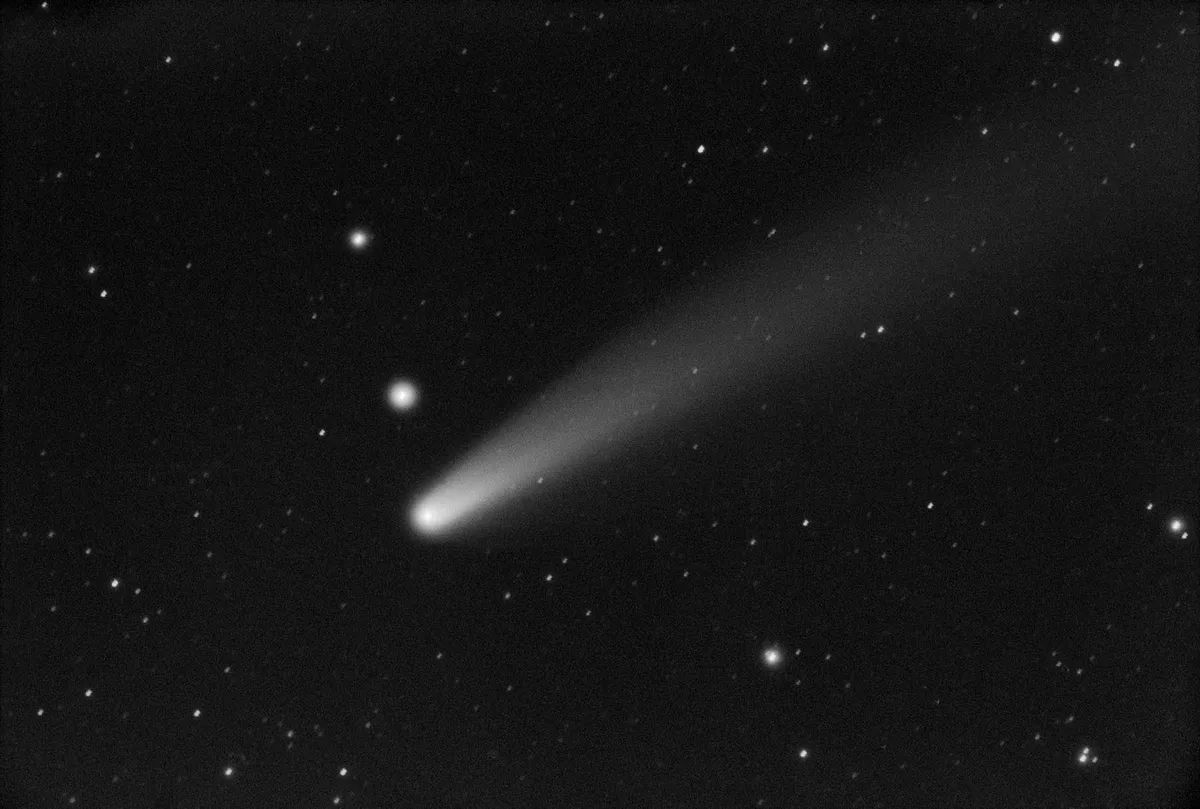
The first of two comets to become great during the 1970s, Comet Bennett was discovered on 28 December 1969.
In February 1970 the comet reached magnitude +3.0 while its dust tail had grown to 12º in length. Its coma displayed short, faint jets at this time.
As perihelion approached on 20 March, the comet grew brighter still and reached magnitude 0.0.
It then began to move away from both Earth and the Sun respectively, but was to be followed telescopically until February 1971.
Bennett was another dusty comet with an active nucleus that ensured greatness. Its period is in the order of 1,678 years, meaning it should have appeared in the Dark Ages, in or around the year AD 292.
However, searches have shown no sign of this historic return.
7
C/1975 V1 West
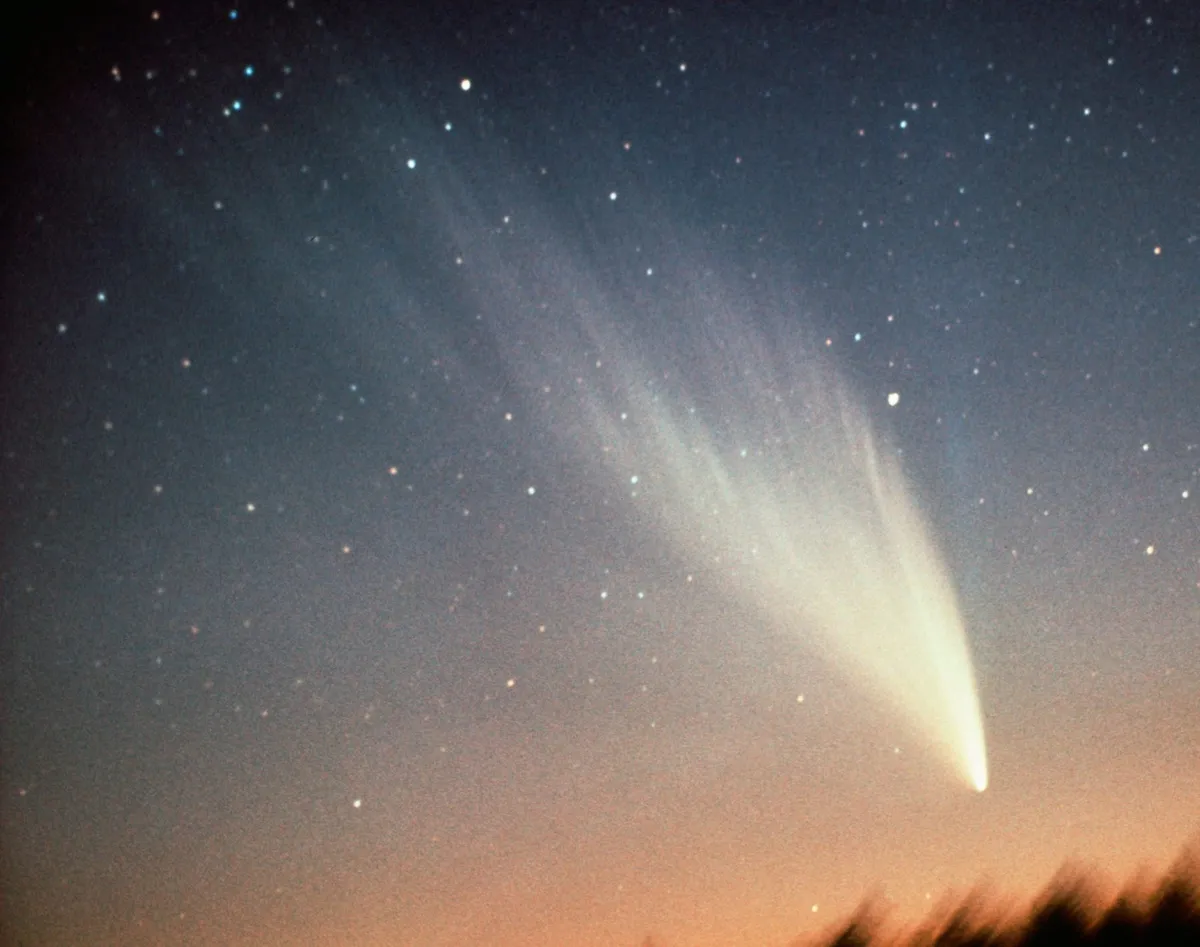
Discovered on a photographic plate on 10 August 1975, Comet West was to become the great comet of 1976.
When it reached perihelion on 26 February, just 6.4° from the Sun, it had a magnitude of –3.0 and between 25–27 February it was visible in broad daylight.
This comet also fragmented into two pieces on 7 March and subsequently broke into another two pieces on 18 March.
Many observers missed the comet due to it being visible only in pre-dawn skies, and also due to the lack of media attention caused by the failure of Comet Kohoutek to live up to its promise some three years earlier.
However, those who did see it were treated to a long, broad dust tail of immense beauty.
Comet West was a very dust-rich comet and another with a small perihelion distance, which ensured greatness.
With a huge aphelion distance, calculated to be around 70,000 AU – a whopping 1.1 lightyears – this great comet’s orbital period is so vast that we will not see it again for some 558,000 years.
8
C/1996 B2 Hyakutake
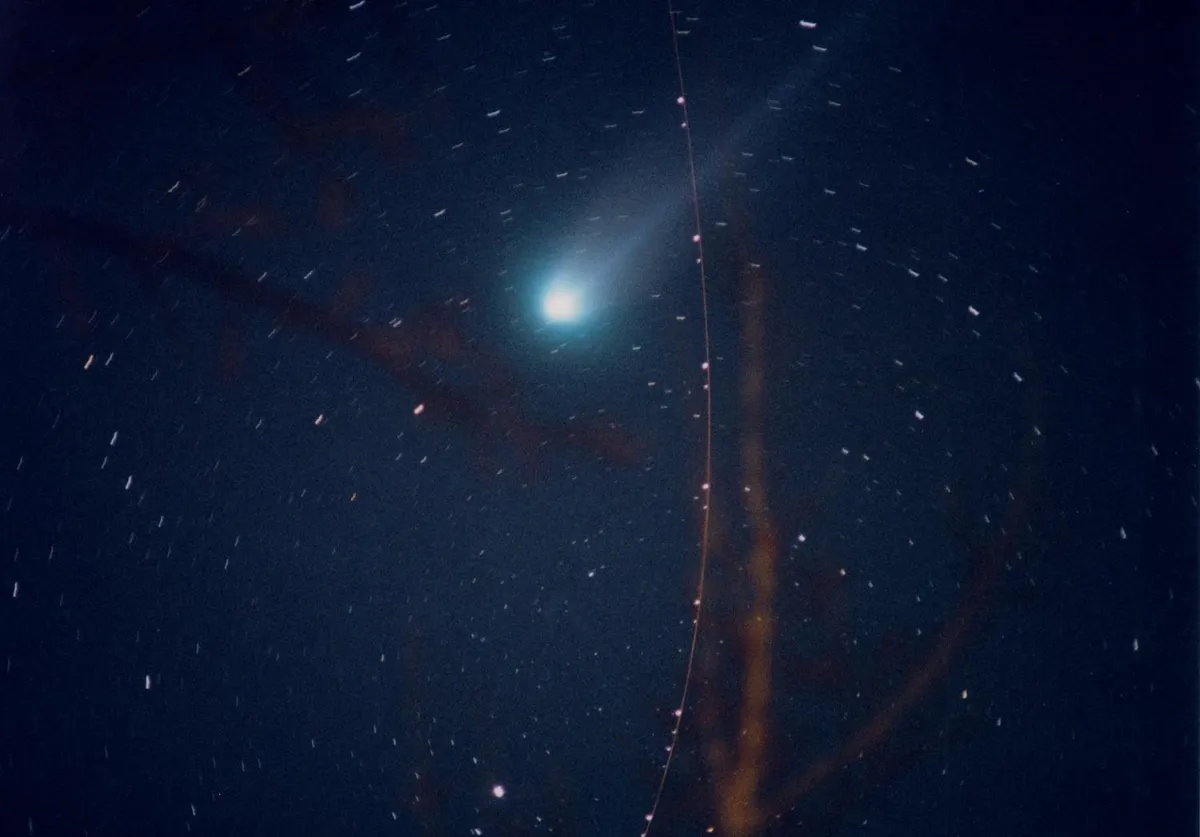
Comet Hyakutake reached greatness only briefly after it was discovered on 30 January 1996, shining dimly at magnitude +11.0, some 2 AU from the Sun.
Excitement grew when orbital calculations indicated a close Earth pass of just 0.1 AU in late March 1996 and that it would be visible high in a dark Northern Hemisphere sky.
The comet remained at average brightness until mid-March, when it attained magnitude +4.0.
As the date of closest approach to Earth came, the comet rapidly brightened and, on 25 March, it became a magnitude 0.0 object with a tail over 80° in length.
This was Hyakutake’s ion tail; its dust tail didn’t form until perihelion came on 1 May 1996.
The comet was ascertained to have a nucleus 4.2km in diameter and, other than its close approach to Earth, its characteristics were relatively unremarkable.
So much so that, had it passed Earth at 1 AU, it would have barely made binocular visibility.
9
C/1995 O1 Hale-Bopp
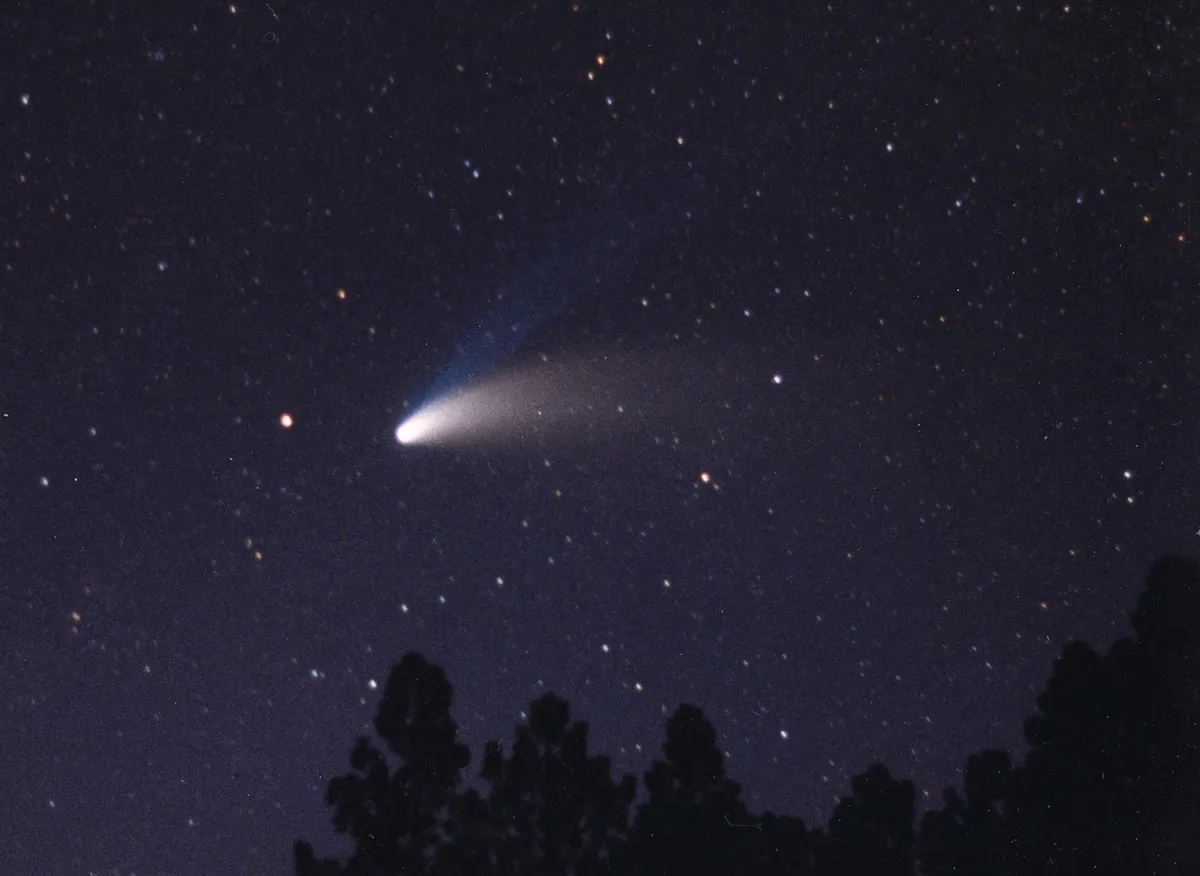
A true great of modern times, Comet Hale-Bopp was located between the orbits of Jupiter and Saturn when it was discovered on 23 July 1995 at magnitude +10.0.
With perihelion still some 21 months away, its early discovery set a record for amateur comet hunters, which still stands to this day.
Subsequently, Hale-Bopp was located on images taken before its discovery dating back to 1993, which showed that the comet was active at a distance of 13 AU from the Sun, where most comets are still dormant.
It became a naked-eye object in May 1996 and remained so until December 1997, an impressive 569 days, or around 18 months – yet another record held by this comet.
Comet Hale-Bopp was a monster of a comet with a nucleus estimated to be between 60-80km in diameter; had it passed Earth at a distance akin to Comet Hyakutake, there it no doubt it would have been hailed as the ‘Comet of the Millennium’.
Read the full story behind Comet Hale-Bopp.
10
C/2006 P1 McNaught
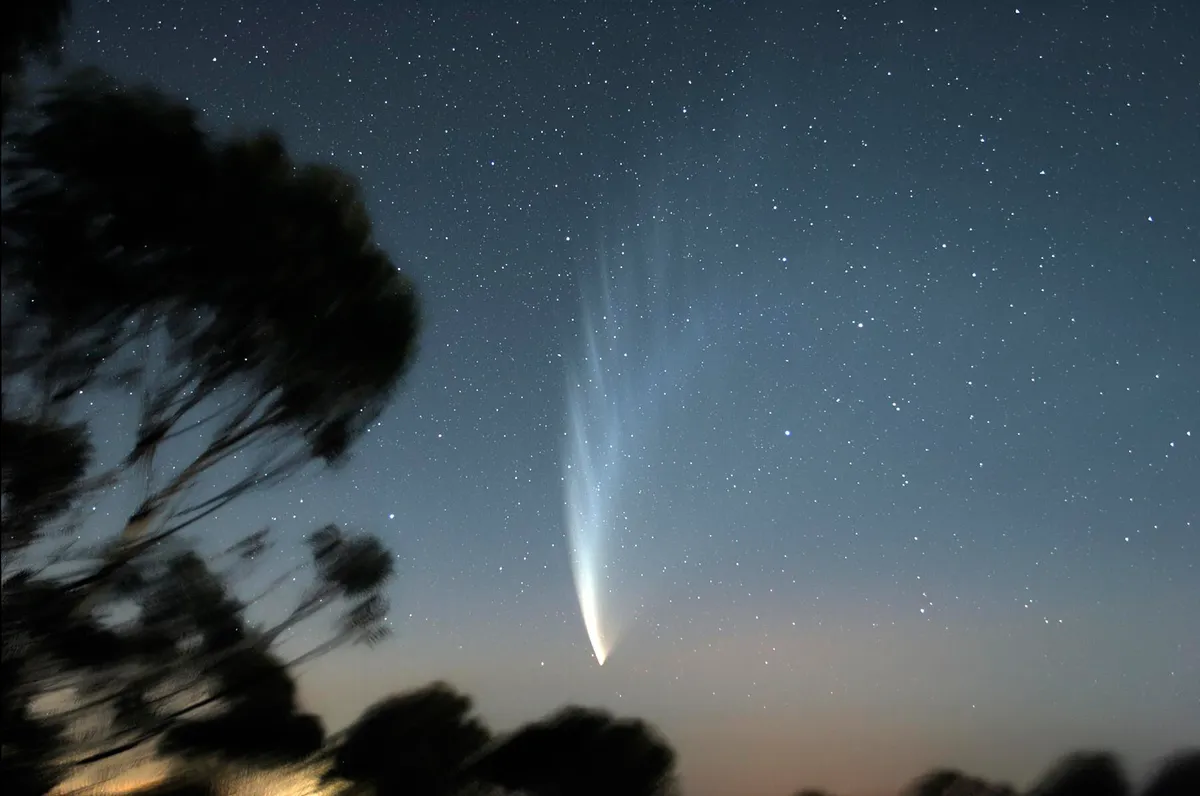
The most recent comet on our lists of greats, Comet McNaught was discovered in CCD images on 7 August 2006, when shining at a rather dim magnitude of +17.0.
Its brightness had only risen to mag. +9.0 by the time it went into solar conjunction in December, but when it was picked up again in January 2007 it had reached a naked-eye magnitude of +2.5 and became visible low in the Northern Hemisphere sky at dusk.
Perihelion arrived on 12 January at a distance of just 0.17 AU from the Sun, which saw the magnitude of the comet rise to –5.5, making it visible in the daylight sky around 7º southeast of the Sun.
Closest approach to Earth came on 15 January, at a fairly large distance of 0.82 AU. After perihelion McNaught sprouted a magnificent curved dust tail that displayed synchronous bands and striations all the way through its 35º length.
This was again a case of a comet becoming great due to its close perihelion approach and very dusty composition.
The orbit of this comet was initially estimated to be 6.5 million years, which has now been reduced to 93,000 years.
And the winner is...
We have been treated to some very special comets over the past 160 years or so, but in terms of pure greatness there can only be one true winner – and that is Comet C/1995 O1 Hale-Bopp.
It is just a shame it will not be back for 2,500 years or so. As we await its return, there are sure to be many others discovered by amateur astronomers watching the skies. Who knows, perhaps the next one will bear your name.
Read the full story of Comet Hale-Bopp's discovery.
What are the Kreutz comets?
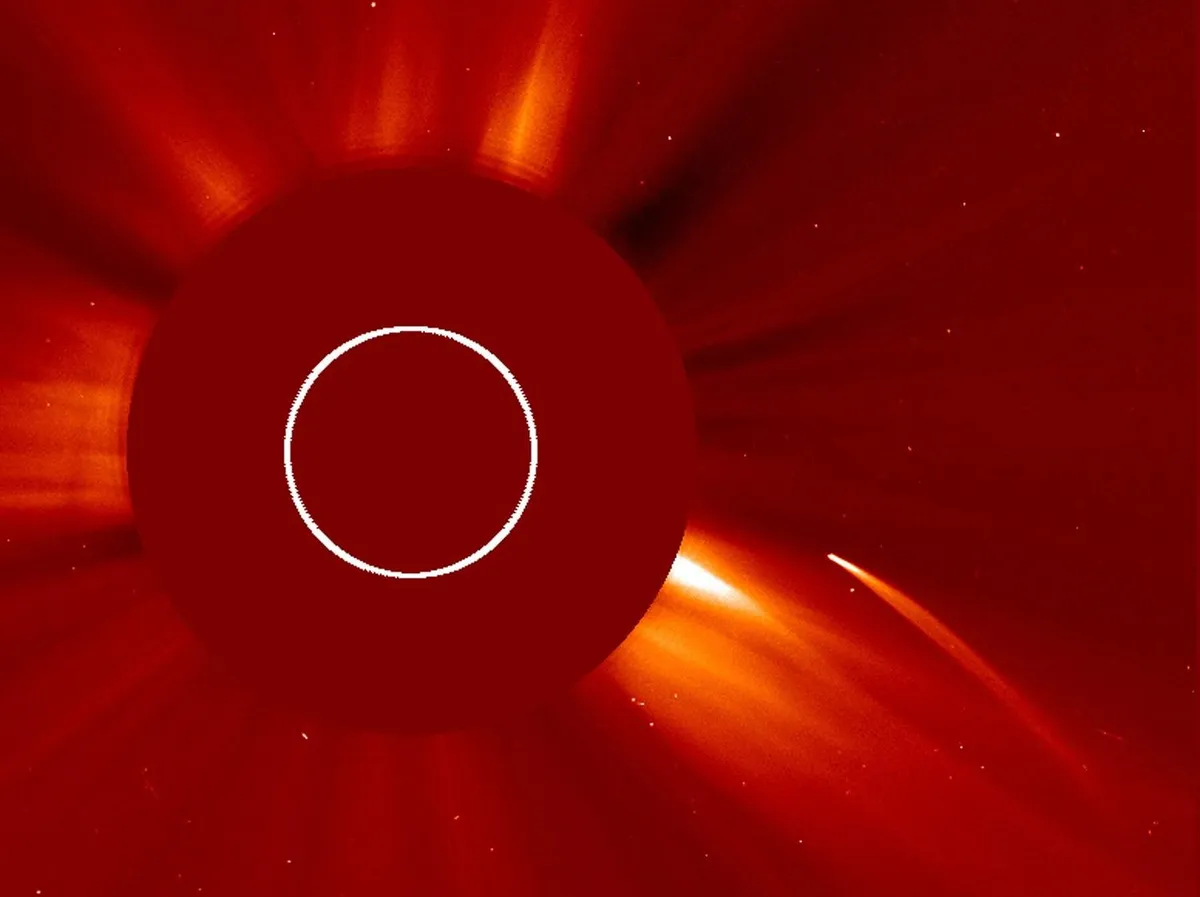
The German astronomer Henrich Kreutz was the first to note in 1888 that several comets that had been seen in the previous 50 years had passed perihelion at extremely close distances to the Sun, and had very similar orbital elements.
Today, these comets are named in his honour and all the members, which are now known to total over 2,000, have perihelion distances that range from 0.005 to 0.009 AU from the Sun’s centre.
Known to come from the breakup of one large comet in the 12th century, they share other key orbital characteristics too, with aphelion distances around 170 AU from the Sun, orbital periods between 500 and 1,000 years and orbital inclinations of 140º.
The most notable members of the group are the Great March Comet of 1843, The Great September Comet of 1882 and Comet C/1965 S1 Ikeya-Seki.
The last spectacular Kreutz comet – and the first one discovered using ground-based telescopes in 40 years – was C/2011 W3 Lovejoy in November 2011, which survived a perihelion pass of just 140,000km from the surface of the Sun and appeared post-perihelion as a ‘headless’ comet.
Its nucleus had disintegrated completely and it then spawned a tremendous tail before fading out completely.
Radiation and tidal forces from the Sun account for the demise of many of these comets as they are only tens of meters across.
The sad tale of CometKouhoutek
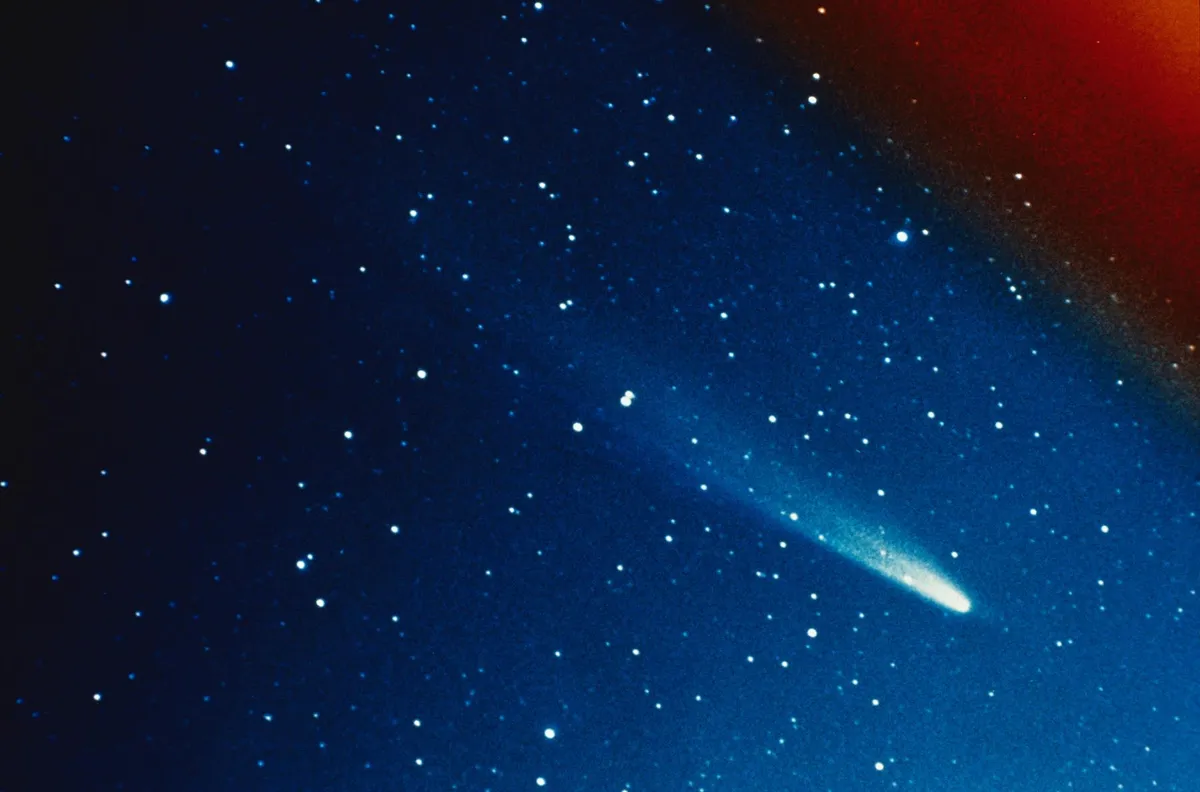
For all our focus on outstanding comets, there is one that remains well-known for not living up to expectations – Comet C/1973 E1 Kohoutek.
Discovered on 7 March 1973 by Dr Lubos Kohoutek on a photographic plate, the comet was then at the orbit distance of Jupiter, a record for comet discoveries at the time.
Its orbital characteristics were of interest as they showed it would pass close to the Sun, coming within 748 million km.This gave the comet potential to become mag. -10.0, a daylight object.The media caught on and declared that Kohoutek would become ‘The Comet of the Century’.
With all eyes on the comet and expectations set so high, when it peaked at a very respectable mag. -3.0 it was inevitably and unfairly declared a huge let down.
The reason for the failure may very well have been due to the comet undergoing an outburst at discovery, giving a false magnitude for astronomers to work with.
Nevertheless, it remains an instructive lesson in how not to promote astronomical events.
Have you ever seen or photographed a comet? Let us know by contacting us on Facebook, Twitter or Instagram
Neil Norman is the creator of the Comet Watch Facebook group and contributes to the comets section in the Yearbook of Astronomy.
This article first appeared in the May 2020 issue of BBC Sky at Night Magazine.